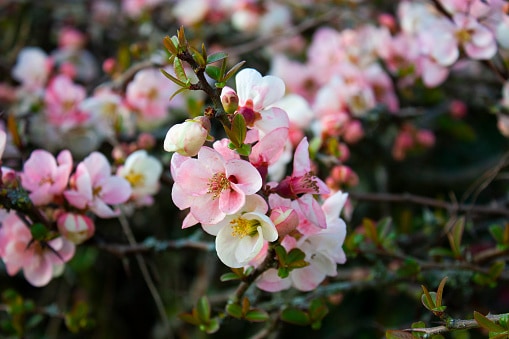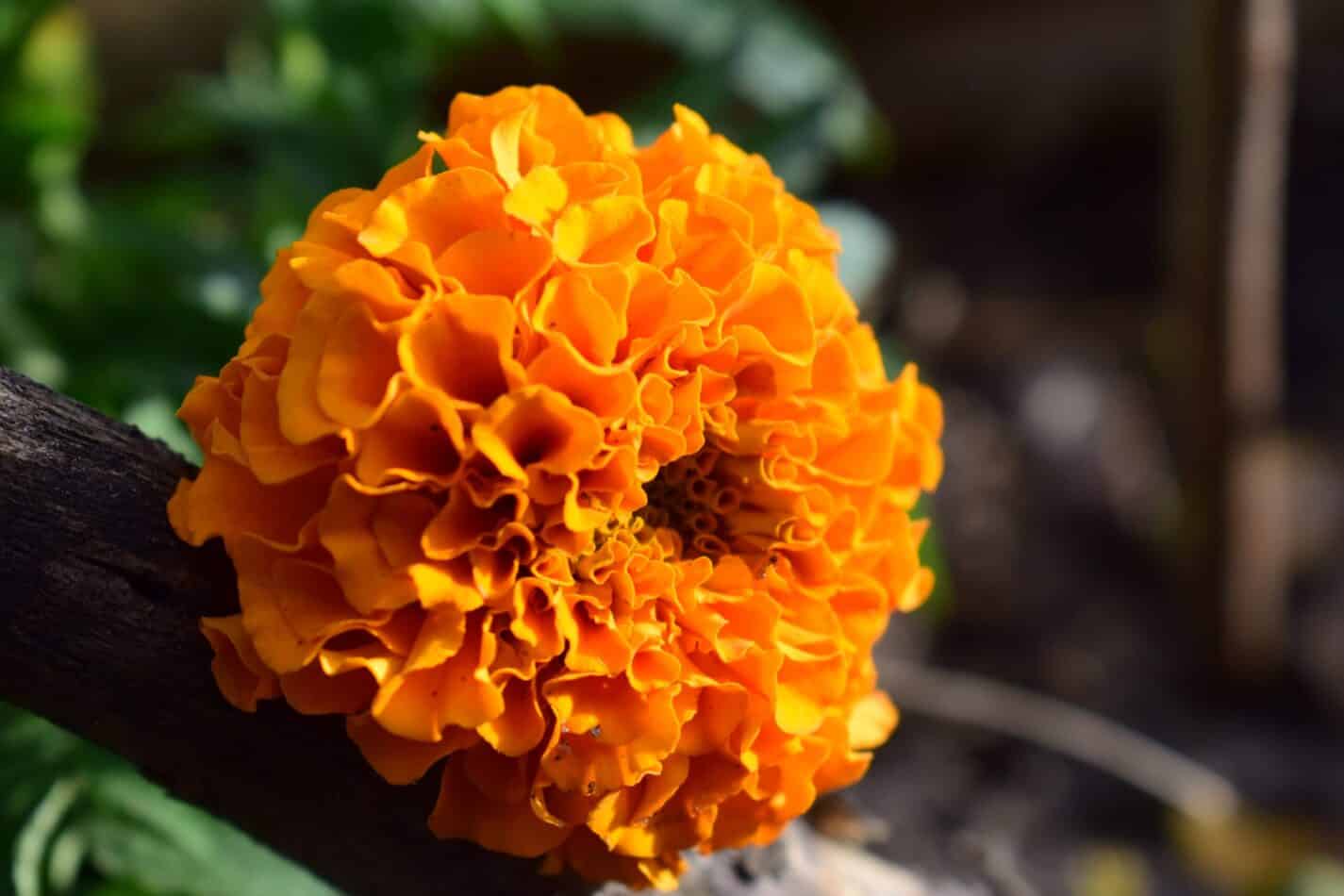The Chaenomeles speciosa (Flowering Quince) is a deciduous shrub that produces beautiful flowers ranging from bright red, orange, white and even pink in color and bloom up to 14 days in the late winter to early spring. It has a thorny habit and can grow up to 10 feet tall, making it an ideal choice as a barrier plant. After the flowers bloom, it produces yellow-green fruits which are often used in jellies and preserves. This attractive and messy-looking shrub is a member of the Rosaceae family and is a perennial plant.
Etymology
The word “chaenomeles” is from the Greek word “chaiñomelis” which means “split apple” while speciosa comes from the Latin word “speciosus” which means “showing” or “beautiful.” This describes the plant perfectly, as its flowers can resemble a split apple and it is indeed very beautiful when in bloom.
Meaning and Symbolism
The flowering quince is widely known to symbolize health and happiness. It often was a sign of hope, peace, and joy and symbolizes recovery from physical and emotional battles. This is due to the fact that the flowering quince was known since ancient times to have medicinal properties.
History, Mythology, and Religious Significance
Throughout history, the Flowering Quince has had a cultural significance to many societies. It was widely believed in ancient Greece that the flower could provide a cure for many ailments from headaches to exhaustion, and was even mentioned by Shakespeare in Romeo and Juliet. In Chinese culture, the quince is a symbol of luck and fertility, and is often presented as a wedding gift. In Christianity, it’s associated with the Virgin Mary, and is even referenced in the Bible.
Flower Varieties and Their Defining Characteristics
There are many varieties of Flowering Quince, each with its own defining characteristics. The most popular varieties are ‘Toyo-ni-shidare’, ‘Jet Trail’, ‘Appleblossom’, and ‘Shishi-gashira’. ‘Toyo-ni-schidare’ is a popular and reliable variety, with a more upright habit than other varieties, and producing deep red flowers. ‘Jet Trail’ is a compact variety with a dense habit and bright pink flowers. ‘Appleblossom’ is a vigorous variety, producing masses of fragrant white or pink flowers, as well as a large amount of yellow-green fruits. Finally, ‘Shishi-gashira’ has a shrubby habit and bears semi-double pink flowers.
How to Plant
The Flowering Quince can be planted in a variety of soils, from sandy loam to well-drained clay, and likes to be in full sun to partial shade. It is also tolerant of a variety of temperatures and light levels and prefers a humid environment. It is important to keep the soil moist, but not wet, and to apply fertilizer at least once a month during the growing season.
How to Pot and Repot
The Flowering Quince should be planted in a container using a well-draining potting medium like loam, peat moss, or compost. Make sure to allow adequate drainage to avoid root rot. The pot should be placed in an area that can receive full sunlight for most of the day and make sure to water the soil when it feels dry to the touch. When it’s time to repot the plant, make sure to use a larger container and make sure to discard the old soil, replace it with fresh potting mix, and make sure the new pot has drainage holes.
How to Prune
To keep your flowering quince healthy and looking its best, it’s important to prune it. Pruning should ideally take place in the spring, but be careful not to prune too much, as pruning can reduce blooms in the following year. When pruning, it’s important to make sure that you’re pruning the right branches and stems, as the wrong cuts can have a negative effect. When pruning, make sure to make the cuts at an angle, as this will help to promote new growth.
How to Propagate
The Flowering Quince can be propagated from both seeds and cuttings. When propagating from cuttings, it is important to use cuttings that are at least 3-4 inches long and that have several sets of leaves. Make sure to make your cut just above a node and use a rooting hormone to help promote root growth. Plant your cutting in a mix of sand and peat moss, make sure it is kept moist, and place it in a warm place with good air circulation. When propagating from seeds, it’s important to let the seeds dry out before planting them in a mixture of sand and peat moss and make sure to keep the soil moist.
Common Pests and Diseases
The Flowering Quince is susceptible to a variety of diseases and pests such as leaf spot, powdery mildew, root rot, and aphids. To avoid these, it’s important to keep the plants in the proper environment to prevent the spread of diseases and pests. An effective way of dealing with aphids is to use a soapy water or insecticidal oil spray solution. For leaf spot and powdery mildew, use a fungicidal spray. For root rot, ensure that the soil you’re using has adequate drainage, as standing water can lead to root rot.
Frequently Asked Questions
Q: What is the lifespan of a Chaenomeles speciosa?
A: The life expectancy of the Flowering Quince is up to 10 years in ideal conditions.
Q: How should I care for the Flowering Quince?
A: To care for the Flowering Quince, make sure it is planted in a well-draining soil, water it regularly, and place it in an area that receives full sun. Fertilize the plant once a month with a balanced fertilizer and make sure to prune it in the spring.
Q: How big does the Flowering Quince grow?
A: The Flowering Quince can grow up to 10 feet tall and 4-5 feet wide in ideal conditions.
Fact Sheet
| Flowering Quince | Chaenomeles speciosa |
|---|---|
| Family | Rosaceae |
| Plant type | Perennial |
| Mature size | Up to 10 feet tall and 4-5 feet wide |
| Sun Exposure | Full sun to partial shade |
| Soil Type | Well-drained soil |
| Soil pH | 6.0-7.5 |
| Bloom time | Late winter to early spring |
| Flower color | Red, orange, pink, white |
| Hardiness Zones | 5–8 |
| Native Area | Eastern Asia |
What we love from Amazon this week
Buy these wonderful flowers directly from Amazon:















